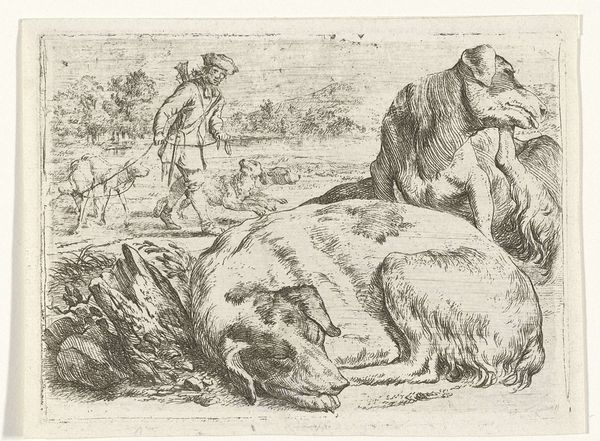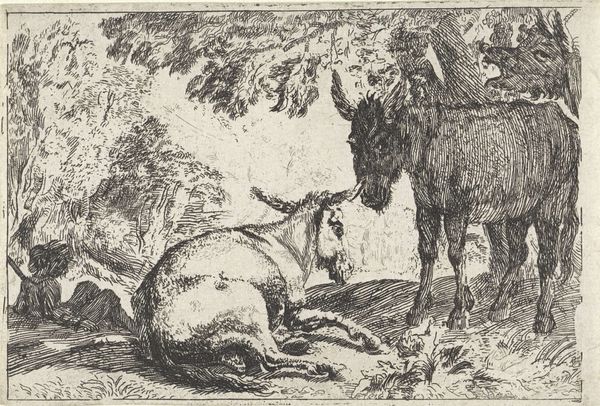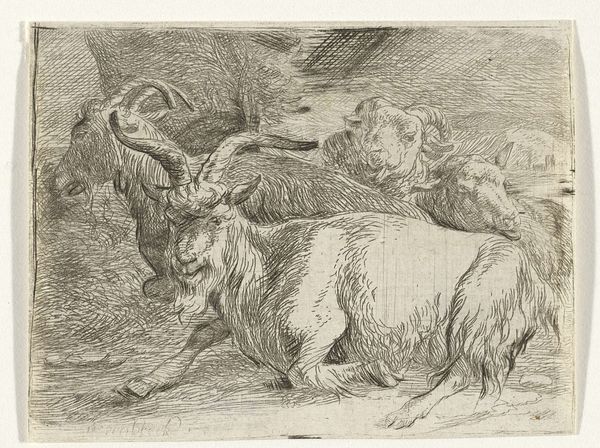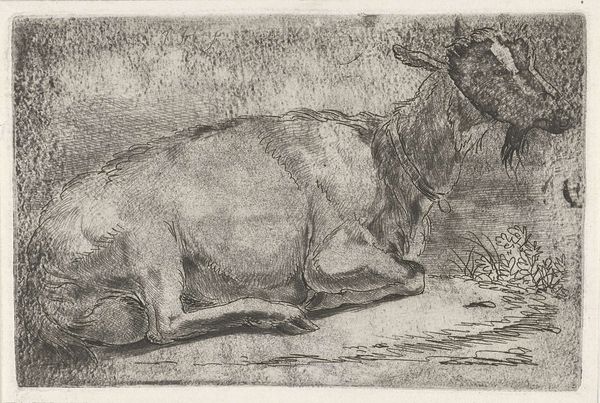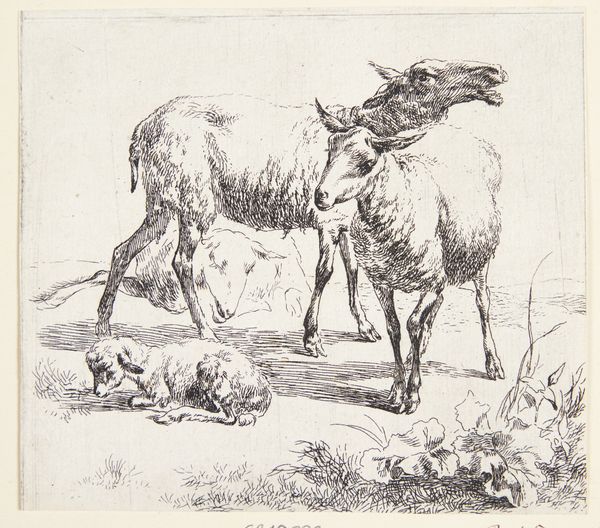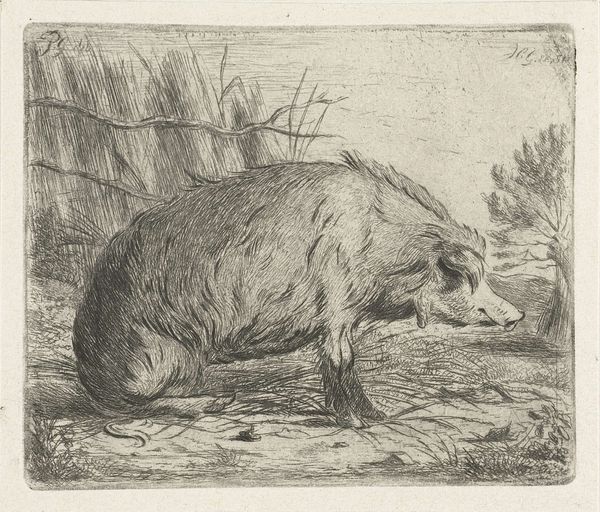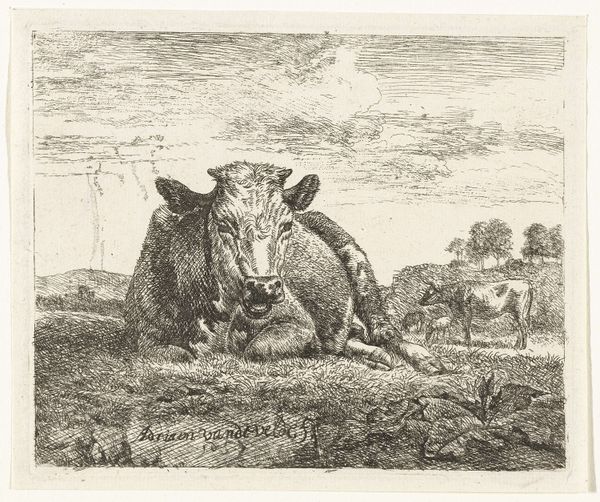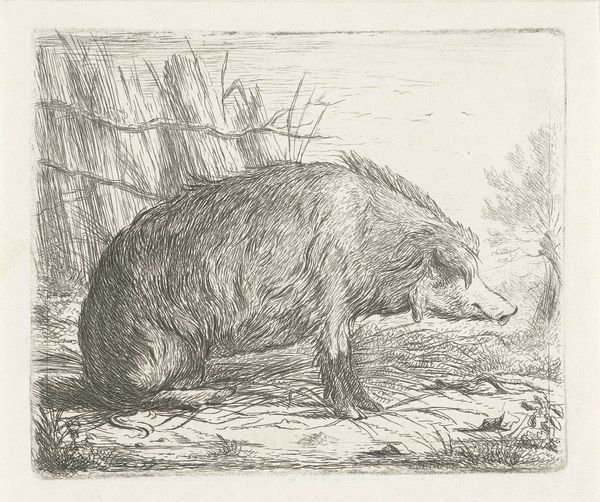
print, etching
#
animal
#
dutch-golden-age
# print
#
etching
#
landscape
#
figuration
#
realism
Dimensions: height 140 mm, width 170 mm
Copyright: Rijks Museum: Open Domain
Curator: Look at this compelling print, titled "Wild Zwijn," etched by Abraham Hondius in 1672. What strikes you first? Editor: Its immediate mood is somber and a bit burdened. The density of line work seems to press down, and yet it conveys the earthy bulk of the animal effectively. Curator: Indeed. Hondius uses etching masterfully to describe both the subject and the surrounding landscape. Notice how the varying line weights and cross-hatching build form and depth. What do you make of its materiality, though? This image is, in effect, ink on paper. How does it engage the artistic traditions surrounding printmaking in 17th-century Holland? Editor: For me, that’s where the piece gains additional meaning. Beyond just depicting wild boars realistically, it demonstrates the etcher’s process. The image foregrounds its production through these visible etched marks, creating a bridge between the perceived naturalism and labor inherent in art production. What does that conscious mark-making suggest? It almost reveals to us a sense of labor involved. Curator: A revealing lens. The careful composition, the way Hondius juxtaposes light and shadow… it's less about photorealism and more about a structured and deliberate composition to produce desired aesthetic effect and to capture its animal subjects. Editor: But shouldn’t we also consider the cultural moment in which this work was produced? Hunting, agriculture, land use-- these processes are crucial in Dutch Golden Age society. Etchings such as this often are produced in series. Can it tell a greater narrative? Perhaps one beyond purely aesthetic values, connecting to ideas about land and dominion, or to foodways in a time before mechanical farming? Curator: Interesting points! Considering that hunting and agriculture intersect with status and control during the era provides new frameworks to see Hondius’ piece. But maybe its stark style makes you see more drama here than exists on the plate itself. Editor: Or that you see less narrative woven through its material traces than is self-evident, a risk one runs in hyper focus on pure aesthetics, perhaps? Curator: Perhaps! Still, it's hard to deny the effectiveness with which Hondius evokes the feel and heft of a wild boar in its natural habitat. A very solid contribution. Editor: It leaves me to appreciate the process and labor involved even more deeply than its purely representational qualities, that much is sure.
Comments
No comments
Be the first to comment and join the conversation on the ultimate creative platform.

